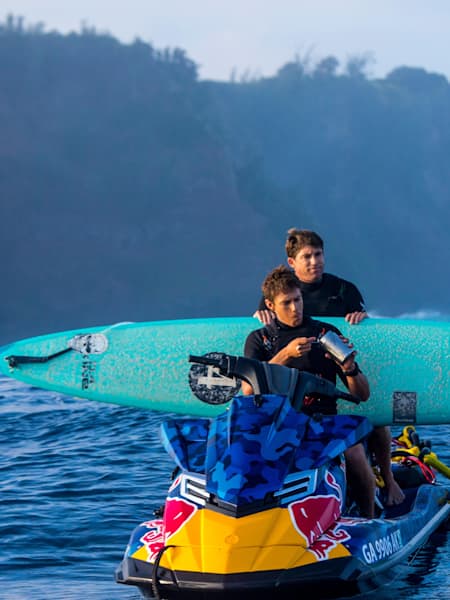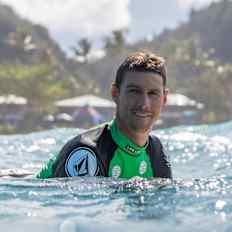The main function of a big wave board is to quite simply get you to speed, and get you to the bottom of the wave. If you’re especially adept at it, there is a bit more between those two cusps, that might include a tube ride or a mid-face carve, but for the majority of surfers they just want to be able to catch a monstrous wave without the wave overtaking them. A surfer needs to be able to get that board as close to the speed of the breaking wave as possible to enable the surfer to catch the wave.
To get a board to be able to paddle really fast, that board needs a great deal of length – a good gun starts at about 9’6 – and that board needs to have thickness. A minimum thickness for a big wave board to be effective these days seems to be about 3 inches thick, but many surfers have gone thicker than that, just for the extra paddle. A 9’6 long surfboard that is three inches thick is going to have incredible paddle speed, but a 10’0 at 3’25 inches thick is going to have even more. The bigger and thicker the board however, the more unwieldy it becomes. The art of the big wave board is somewhere in between.
To make sure that a big board does not get too unwieldy, the big wave shapers have been experimenting with fins. Not so much the style of fins, because there are so many different styles and all are very relevant, we’re talking more here about the amount of fins on a board. These days the trend is for four fins, or quad set-ups on big boards. It was William "Stretch" Riedel who introduced the four fin set-up into the big wave scene back in 2005, and his equipment was immediately recognised with Anthony tashnick winning the Men Who Ride Mountains event at Mavericks on one.
The four fin set-up was faster, had less drag than the thruster, and provided that little bit of extra fin when a board was put on rial on a big bottom turn or through a possibly airborne take-off. Most modern big wave guns have a four-fin set up, and if a surfer is still a thruster-fna, there would no doubt be a quad board in his or her quiver.
A big wave board is also heavier than normal boards and way heavier than the ultra-light competitive surfboard models out there. the big wave boards need to be tough, and they need to get momentum going. Weight addds advantage here. On top of this, with the massive waves being ridden at places like Pe’ahi/Jaws, the risk of updraft on take-off is so atrong that a little bit of extra weight would not be out of place. For the really big boards, a layer of 6 ounce cloth on the bottom, and two layers of 6 ounce cloth on the top will make for a really strong gun and not effect the flex negatively. A thicker stringer will add to this strength.
These boards are for paddle-in big wave surfing only. The glory comes from paddling, moving your shoulders, getting your hands wet. The tow days aren’t over, but they’re no longer a ground-breaking endeavour. Surfing is a noble pasttime and the sport of kings. Whining 4-stroke diesel engines in the surf is not quite what The Duke had in mind.







